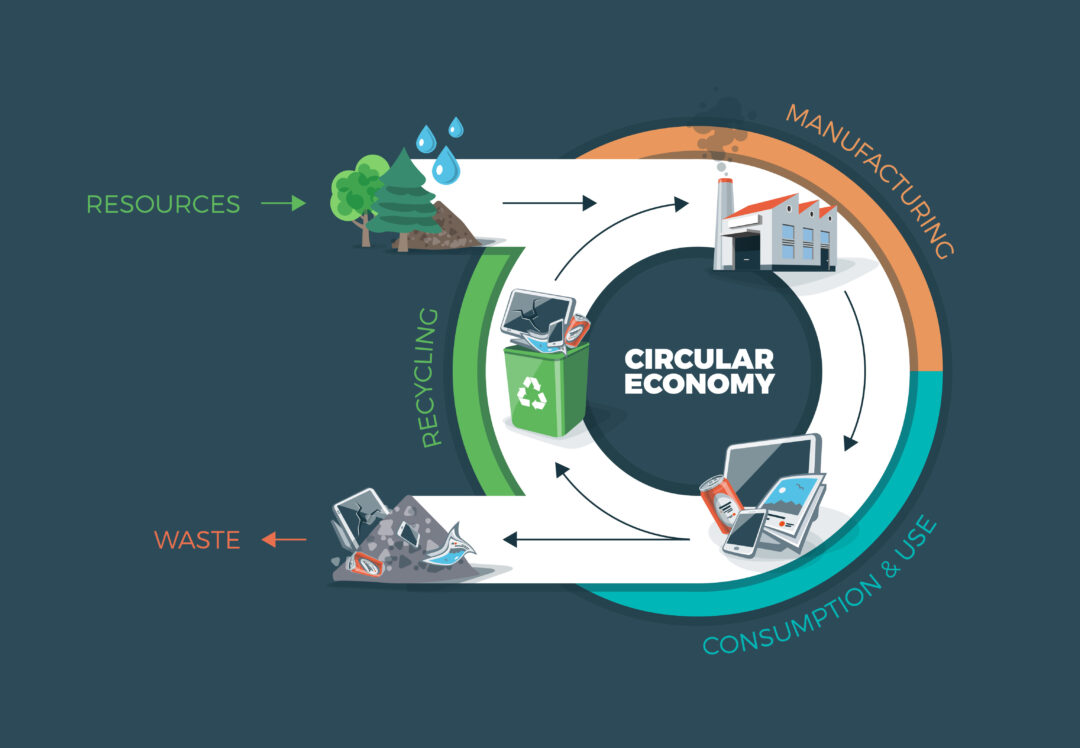The Circular Economy in Action: How WEEE Recycling Drives Sustainability
In a world grappling with the environmental challenges posed by electronic waste, the concept of the circular economy emerges as a flicker of hope.
Particularly in the realm of Waste Electrical and Electronic Equipment (WEEE) recycling, the circular economy presents a transformative approach that not only addresses the frustration of e-waste but propels us toward a more sustainable future.
Understanding the Circular Economy:
The circular economy is more than just a buzzword; it's a fundamental shift from the traditional linear model of production and consumption. In the linear model, products have a linear life cycle—create, use, dispose. In contrast, the circular economy promotes a closed-loop system where products, materials, and resources are continually reused, refurbished, remanufactured, and recycled.
WEEE Recycling as a Pillar of Sustainability:
> Minimising Resource Depletion:
Traditional manufacturing processes often rely on the extraction of finite resources. WEEE recycling intervenes by extracting valuable materials from discarded electronic devices, reducing the demand for raw materials and minimising resource depletion.
> Reducing Environmental Impact:
E-waste, when improperly disposed of, poses severe environmental threats. From toxic chemicals leaching into soil and water to air pollution caused by incineration, the impact is far-reaching. Circular WEEE recycling mitigates these threats by responsibly managing electronic waste, preventing harmful substances from contaminating ecosystems.
> Promoting Energy Efficiency:
Manufacturing products from raw materials consumes substantial energy. Circular economy practices, including WEEE recycling, significantly reduce the need for energy-intensive extraction and production. Recovering materials from electronic waste consumes less energy than extracting them from the earth, contributing to a more energy-efficient and sustainable process.
The Lifecycle of Electronic Devices in a Circular Economy:
> Design for Sustainability:
In a circular economy, product design is key. Manufacturers are encouraged to create devices with longevity in mind, making them easy to repair, upgrade, and disassemble. This shift toward sustainable design principles minimises the generation of electronic waste in the first place.
> Reuse and Refurbishment:
Circular WEEE recycling emphasises the importance of extending the lifespan of electronic devices. Through refurbishment and repair, outdated or malfunctioning equipment can be given a new lease on life, reducing the need for constant replacements and curbing the accumulation of e-waste.
> Recycling and Recovery:
At the end of their functional life, electronic devices enter the recycling phase. Circular WEEE recycling facilities systematically extract valuable materials, such as metals and plastics, from electronic waste. These materials are then repurposed into new products, closing the loop and minimising the environmental impact of manufacturing.
Bridging the Gap between Frustration and Dreams:
For individuals frustrated by the challenges of e-waste disposal and dreaming of a world where electronic devices contribute to, rather than deplete, environmental resources, the circular economy offers a tangible solution. By actively participating in and supporting WEEE recycling initiatives, businesses and consumers alike become integral contributors to a more sustainable and circular future.
The circular economy is not merely a theoretical concept; it's a dynamic and achievable approach to addressing the frustrations surrounding e-waste. Through Circular WEEE recycling, we witness the transformation of waste into a valuable resource, fostering sustainability, minimising environmental impact, and turning dreams of a circular future into reality.
#CircularEconomy #WEEErecycling #SustainabilityInTech #EcoFriendlyTech
